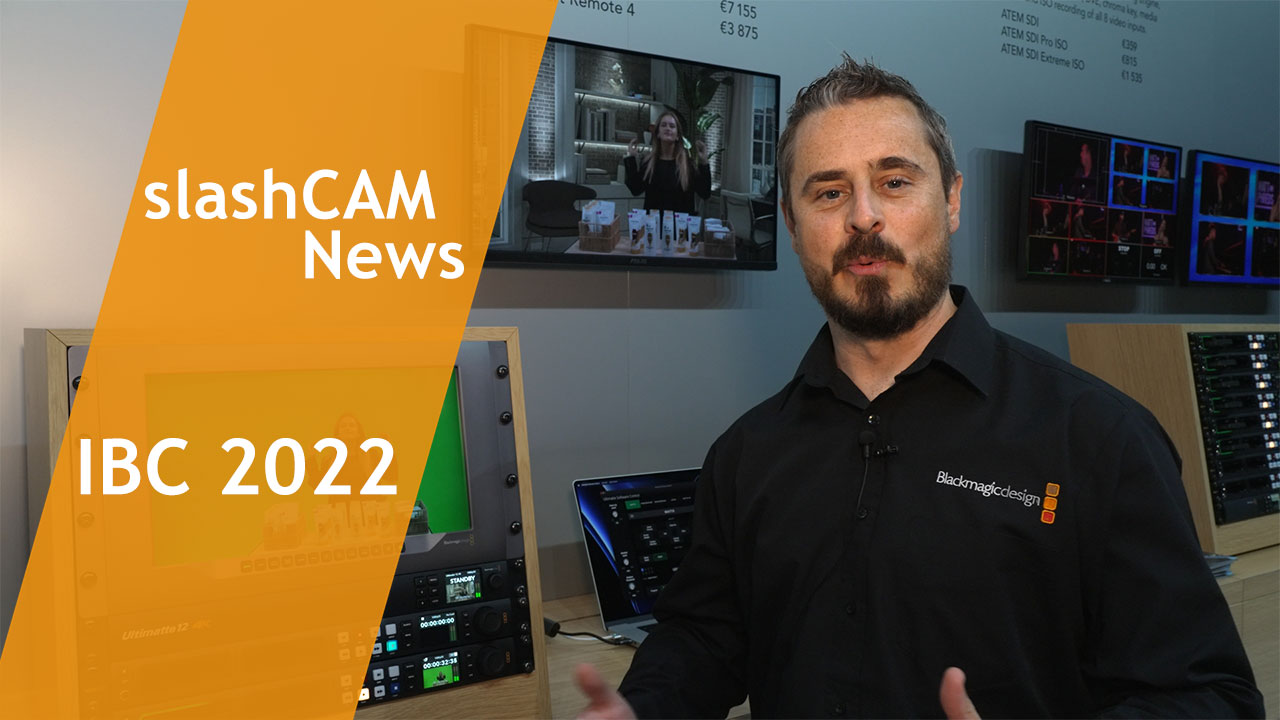[19:51 Wed,17.August 2022 by Thomas Richter] |
We have already reported several times on image generation via text using special DeepLearning systems (such as 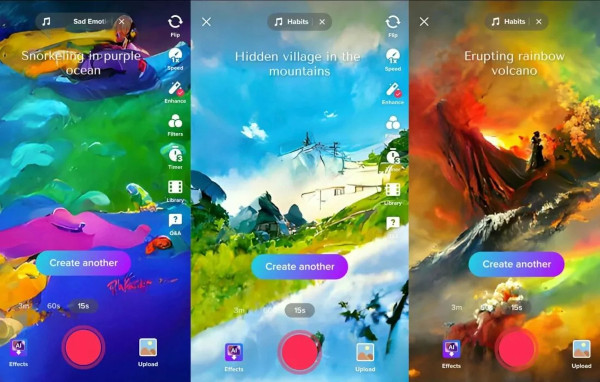 TikTok images by default prompt The new filter, called "AI Greenscreen", generates images within a few seconds according to a description given by the user, for example "rainbow-colored volcanic eruption" or "a hidden village in the mountains" (both default prompts of TikTok, which can then be used as background image in a video (hence the name "greenscreen"), i.e. the TikToker(in) is automatically re-keyed in front of the generated image. However, the generated images are by far not as realistic and diverse as for example those of DALLE-2, this may be due to the fact that TikTok uses a not so complex model, which does not require too high performance (which correlates with the costs, which would possibly be astronomical with a billion potential users) - but possibly it was an aesthetic decision of Tiktok to give its AI a specific artificial look - the images often look very abstract, like painted with a rough brush with water colors and hardly realistic. One advantage of this abstract "beautiful" look is that the generated images with, for example, violent motifs (such as "man kills man") or even of nudity, which are feared by all operators of such AIs, are rendered so abstractly that the actually offensive content is unrecognizable. 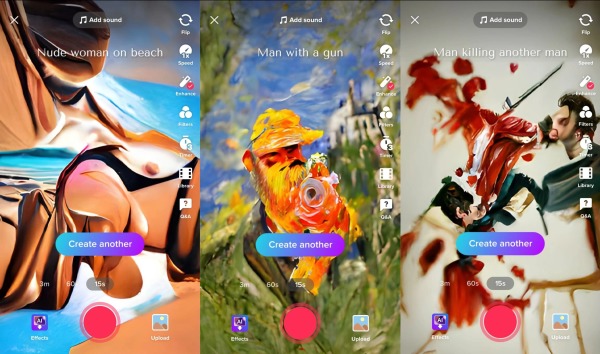 Images generated with offensive text prompts TikTok is thus the first text-to-picture generator available to a large public - at least until the home PC version of 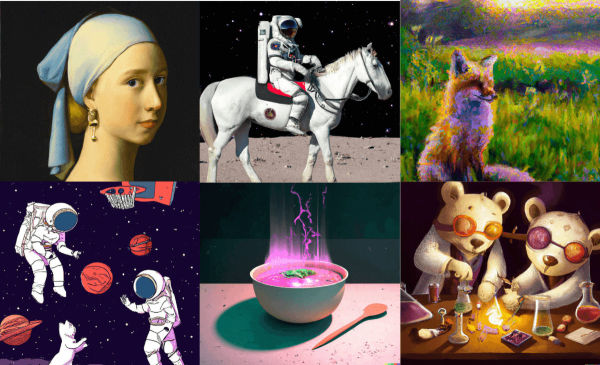 For comparison pictures of DALL-E 2 Interestingly, the algorithms required for image generation are not a secret and can - provided sufficient know-how and finances - be implemented by many companies (?) in their products or be offered as a solo application in the future - precisely because many basic DeepLearning algorithms are freely accessible within the framework of academic research. Now that TikTok is a pioneer, we can expect other large social networks or video portals to offer a similar feature. 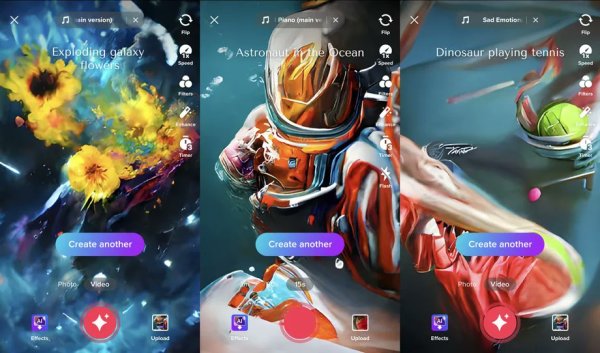 The attraction of AI-generated images is that they are an attractive proposition for users, who can not only generate new and interesting content, but may also spend a lot of time on the platform tweaking new prompts for new images. This costs the operator processor time, but he does not have to pay royalties, as is otherwise the case for purchased stock art or photos. Something similar could soon apply to computer-generated music tracks, for example as soundtracks for videos. In the medium term, of course, such a development poses a major problem for artists who make a living from producing such artworks - be they photos, musical pieces or illustrations. deutsche Version dieser Seite: TikTok prescht vor: KI generiert Bilder nach Beschreibung |





